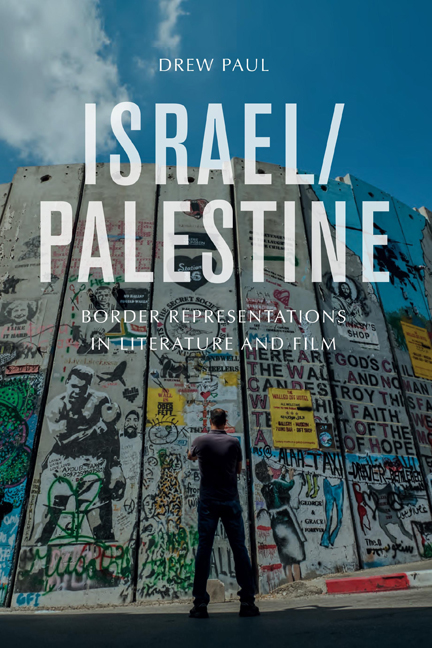5 - Does the Camera Lie? Or, How to Document the Wall
Published online by Cambridge University Press: 08 October 2020
Summary
I filmed the burial of this land.
– Simone Bitton, director of MurA scene from the 2009 documentary City of Borders, directed by Yun Suh, depicts a Palestinian man, along with a few of his friends, attempting to cross the concrete barrier that snakes through the West Bank illicitly, under the cover of darkness. They travel from Ramallah to Jerusalem, where their destination is a gay bar called the Shushan. According to the film, this bar offers a safe space for gay Israelis and Palestinians in the area. It is also depicted as one of the few places in this divided city in which Israelis and Palestinians intermingle and communicate. The act of climbing over the wall in this scene provides a metaphor for the aim of the film as a whole: to show how people get around the myriad barriers and borders that preclude interaction, movement and communication in Jerusalem by uncovering the gaps in these limits. The film illuminates areas of the wall where one can climb over to the other side, or a gay bar on a side street in a quiet Jerusalem neighbourhood that can provide refuge from the pressures of ethnic discrimination, religious bigotry and anti-gay animus that mark the outside world.
City of Borders is one of many increasingly common representations that depict the West Bank barrier in order to critique the separatist and segregationist policies that confine and limit Palestinian movement both within the West Bank and between the West Bank and Israel. Many such films, books and works of art seek glimmers of hope from within the grim concrete of the wall. Frequently, portrayals of the wall, motivated by a belief in coexistence and peace, search for reasons for optimism, whether in the form of a gay bar that caters to both Israelis and Palestinians, nonviolent protests, or politically motivated graffiti adorning the concrete wall. Yet the search for coexistence can be problematic and produce certain blind spots to systemic practices and unequal power relations. For instance, the possibility of an Israeli gay bar as a neutral meeting space is immediately complicated by the question of pinkwashing, in which Israel's relatively permissive stance on LGBT issues produces an image of a progressive, tolerant Israel that eff aces, sanitises and deflects from the decidedly un-liberal practices of occupation.
- Type
- Chapter
- Information
- Israel/PalestineBorder Representations in Literature and Film, pp. 134 - 157Publisher: Edinburgh University PressPrint publication year: 2020

